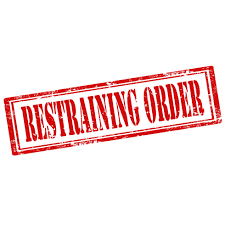 E-filing and the adoption of new local rules has changed how you go about obtaining a temporary restraining order (“TRO”) in the Collin County District Courts. I will not tell you how to comply with the applicable rules and statutes clearly set forth in the Texas Rules of Civil Procedure[1] and the Texas Civil Practice & Remedies Code.[2] This is a practical overview on how to obtain a TRO in Collin County without upsetting a judge or the court’s staff.
E-filing and the adoption of new local rules has changed how you go about obtaining a temporary restraining order (“TRO”) in the Collin County District Courts. I will not tell you how to comply with the applicable rules and statutes clearly set forth in the Texas Rules of Civil Procedure[1] and the Texas Civil Practice & Remedies Code.[2] This is a practical overview on how to obtain a TRO in Collin County without upsetting a judge or the court’s staff.
After preparing all of the necessary documents, contact the Collin County District Clerk to let the clerk know that you will be e-filing an Application for Temporary Restraining Order. In all likelihood, you will be told to include in your e-filing a reference to your need for an emergency hearing. Anything you can do to give the clerk’s office forewarning will be greatly appreciated by the clerks and will make your day a lot less stressful.
Once you have e-filed the necessary documents, proceed to the Collin County District Clerk’s office. The Collin County District Clerk’s Office is probably one of the most efficient offices in the state. You may actually receive confirmation of the filing and be assigned a court before you get to the courthouse, but do not proceed directly to the courtroom. You must first go to the District Clerk’s Office and request that the filings be transferred to the assigned court. Do not expect the court to have something that you e-filed less than an hour ago. The District Clerk’s Office will be able to ensure that the file is with the court before you start asking for an audience.
Pursuant to Local Rule 2.4(c), an Application for Temporary Restraining Order must first be presented to the judge of the court to which the case is assigned. In other words, you cannot roam the halls looking for a friendly judge. If the court you have been assigned is unavailable, it is best to approach the bailiff or court coordinator and ask for permission to approach the auxiliary court.
Be aware of Local Rule 2.4(a) and (b). Local Rule 2.4(a) requires that the applicant for a TRO notify the opposing party at least two hours before the TRO hearing. In practice, this is a bit more difficult to do than it would seem. I strongly suggest filing for a TRO early in the day if possible. This will give you time to jump through these hoops. It is hard enough trying to get a court coordinator to squeeze you into a docket, but it adds a level of difficulty when you ask for a special setting to be placed on the docket no sooner than two hours in the future. Once you obtain your special setting, first contact your client and ensure that someone is available to testify if necessary. Second, contact the opposing party. You must notify the opposing party of the nature of the hearing, their right to appear, the time of the hearing, the address of the courthouse, and the courtroom number. Make a checklist prior to initiating the call. Once the call is completed, prepare a Certificate of Notice that restates your conversation with the opposing party. Be prepared to present the Certificate of Notice at the TRO hearing.
Under certain circumstances you can forego the two hour notice. Pursuant to Local Rule 2.4(b), you can avoid giving notice if you file a certificate with your Application that states one of the following:
- That irreparable harm is likely imminent and there is insufficient time to notify the opposing party or counsel; or
- That to notify the opposing party or counsel would impair or annul the Court’s power to grant relief because the subject matter of the application could be compromised or property removed, secreted or destroyed, if notice were given.
Frankly, I would rather attempt to give the opposing side two hours’ notice than verify one of the above statements.
Once you have jumped through the hoops and obtained the court’s order granting the application and ordering the issuance of the writ, return to the Clerk’s Office, tender the cash or surety bond (that’s a whole new can of worms) and request the issuance of the TRO. Sadly, after all of the rush, you will often be forced to wait two to four hours for the issuance of the TRO. Once issued, you must read over the TRO very carefully. While the Collin County District Clerk’s Office is one of the best in the state, mistakes are sometimes made. It is best to read through the TRO and make sure it complies with the court’s order.
I am knocking on wood when I write that I have not had any serious problems with obtaining a TRO in Collin County. If you have any good stories to share or can add to my advice, please share in the comment section below.
[1] Tex. R. Civ. P. 680 – 693a
[2] Tex. Civ. Prac. & Rem. Code 65.001 et seq.
